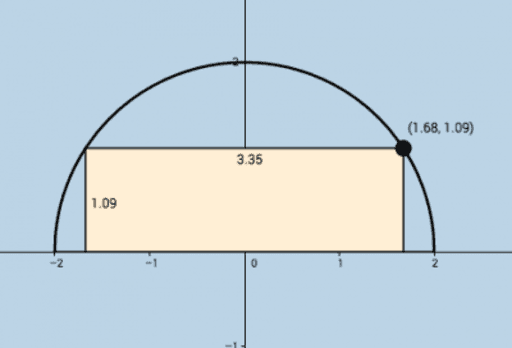

How did the traditional geometers do this? For quadratic equations, parabolas, one knows without calculus that the maximum or minimum is at the vertex of the parabola, and so for functions of the form y = ax² + bx + c, one can write down the answer x min/max = -b/2a and y min/max = y(x min/max). Perhaps for this reason in the wasan differentiation was confined to finding the maximum and minimum of functions. Without this concept it is difficult or impossible to develop a formal theory of differentiation. In no traditional manuscript do we the fundamental formula for the derivative: One thing is certain: the Japanese did not have the concept of differentiation as we know it. The question of differentiation in some sense is more difficult than that of integration because, although traditional Japanese mathematicians wrote volumes on integration techniques, they were virtually silent about how they took derivatives. As the leading coefficient of the function is -1, the graph of the function is a parabola with its "horns" extended downwards, thus insuring existence of a maximum. In particular,įrom which S = xy = (b/a)(ax - x²) and the problem reduces to finding maximum of the quadratic function f(x) = ax - x². The configuration features several pairs of similar triangles that may be used to derive a relationship between x and y.

Using the notations from the diagram, the task is to minimize the are S = xy. |Contact| |Front page| |Contents| |Geometry| |Up|Ĭopyright © 1996-2018 Alexander Bogomolny Triangles, Squares and Areas from Temple Geometry.An Extension of a Sangaku with Touching Circles.Tangent Circles and an Isosceles Triangle.Sangaku with Angle between a Tangent and a Chord.Pythagoras and Vecten Break Japan's Isolation.Maximal Properties of the Pythagorean Relation.Four Incircles in an Equilateral Triangle, a Sangaku.Equilateral Triangles and Incircles in a Square.Equilateral Triangle, Straight Line and Tangent Circles.

Equal Incircle Theorem, Angela Drei's Proof.Circles Lined on the Legs of a Right Triangle.A Sangaku Follow-Up on an Archimedes' Lemma.A Trigonometric Solution to a Difficult Sangaku Problem.A Simple Solution to a Difficult Sangaku Problem.A better solution to a difficult sangaku problem.Rothman, Sacred Mathematics: Japanese Temple Geometry, Princeton University Press, 2008 Find the location of the point on the hypotenuse that maximizes the area of the rectangle.Īccording to Fukagawa and Rothman, the problem was originally proposed in 1806 by Hotta Sensuke, a student of Fujita school, and written on a tablet hung in the Gikyosha shrine of Niikappugun, Hokkaido. From that point draw perpendiculars to the legs of the triangles. Take a point on the hypotenuse AB of the right triangle ABC.


 0 kommentar(er)
0 kommentar(er)
